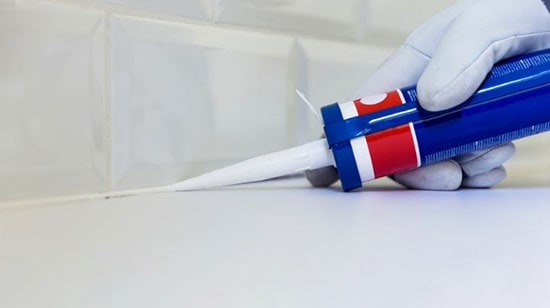Caulking
Joints designed to close the gap between walls and the sides of the bathtub, through which water seeps. Its absence or improper installation can lead to dampness in the bathroom and, as a result, the development of mold. In plumbing stores, there are different types of joints for the buyer to choose from, which differ in manufacturing material, method of fastening, appearance and service life.
A cozy, comfortable atmosphere and aesthetics in the bathroom depends on high-quality plumbing and its competent installation, as well as on small details that at first glance seem insignificant. In fact, it is the ill-conceived little things that sometimes bring a lot of unnecessary trouble. One of these details is the joint between the sides of the bathtub and the walls adjacent to them. This inconspicuous accessory plays an important role in the aesthetic perception of space, and also has a functional value.
The cost of caulking a bathtub is from $25.
Types of joints for the bathtub
-
A plastic border with or without rubber edges is attached to a silicone sealant. It can be attached both under the tile and on top of it. This combines well with steel and acrylic bathtubs due to the material’s ability to expand and contract with temperature.
-
Tiled areas – strong, durable and effective, suitable for heavy baths made of cast iron or artificial stone. It is placed directly on the sides, which makes the entire structure monolithic, and in some cases this is more of a minus than a plus. The dimensions of the tile corners do not allow you to combine the elements in such a way as to do without trimming – an option not for perfectionists.
-
Curb tape is the most affordable option, but the most short-lived. With the adhesive side, it is pressed against the wall around the entire perimeter of the bath. If there are irregularities on the wall, then the tape will not adhere well and will soon peel off. Such a side is not airtight and cannot reliably protect against water leakage.
All these types of bathtub joints have one common drawback – they are all prone to mold and lose their appearance over time. Frequent cleaning with harsh chemicals will change the color of plastic and self-adhesive edges. For this reason, for the joints, it is necessary to choose a material that is resistant to the appearance of fungus and does not need frequent thorough cleaning.
Caulking with pour-on enamel is the best option for decorating the joints between the bathroom and the walls. Its main advantage is the absence of stitches, recesses and sealants.
The border goes into the bath, forming a single whole with it, which means that there are simply no elements that can peel off, change color or become moldy. Caulking with liquid enamel is leak proof and flawlessly performs its function.
Liquid acrylic, when solidified, acquires perfect smoothness, which is due to the absence of pores on its surface.
The properties of this material prevent the development of microorganisms and mold spores, which makes it hygienic and safe.

Caulking with pour-on enamel is done during the acrylic bathtub process and is a logical part of a bathroom ware update and takes a minimum amount of time. The result of the work will be a solid surface, closely adjacent to the wall and having a finished look. This is suitable for any interior and reliably protects the bathroom from moisture ingress under the bath, as well as dampness in the room.



